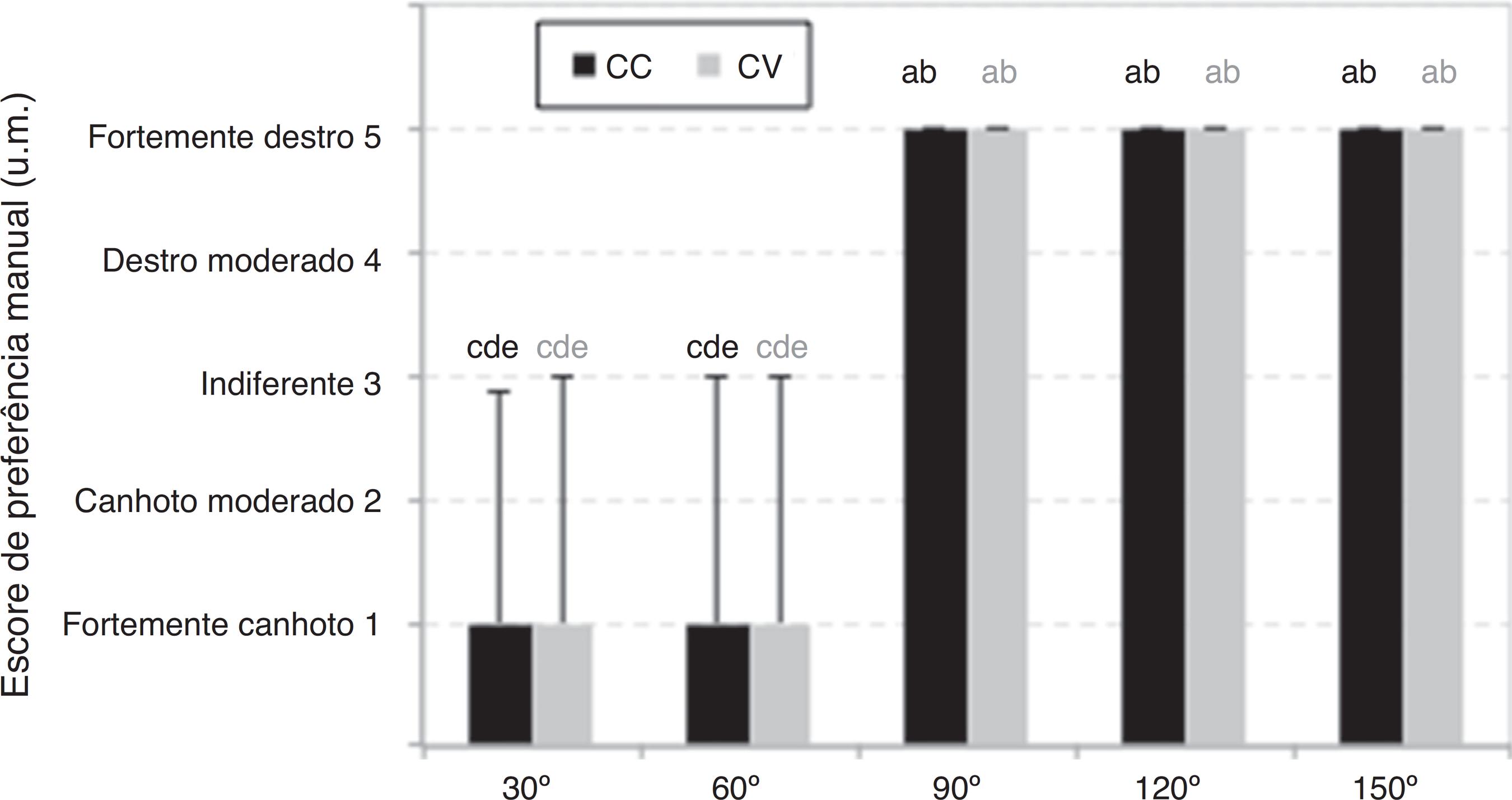Abstract
The manual preference in a reaching task in adults was analyzed according to the spatial location of an object in the environment. Thirty participants performed the task of reaching a cylinder, with one hand, at 50 cm distance in five different positions in relation to the sagittal plane of the participant. Two conditions were performed: comfort and speed. Friedman' s ANOVA showed difference (X230,9 = 122.17; p < 0.001) and the Wilcoxon' s test showed higher scores at positions 90°, 120° and 150° in comparison 30° and 60°, for both conditions (p < 0.01) showing ipsilateral reaches. These results were explained by the biomechanics restriction to perform the task, modulating the manual preference, according to the spatial location of objects in the environment.
KEYWORDS
Functional laterality; Psychomotor performance; Lateral preference; Reach

 Legenda: raio (r).Fonte: ilustração confeccionada pelos próprios autores.
Legenda: raio (r).Fonte: ilustração confeccionada pelos próprios autores.
 Legenda: diferente (p < 0,05) de 30°a, 60°b, 90°c, 120°d e 150°e para a mesma condição.Fonte: ilustração confeccionada pelos próprios autores.
Legenda: diferente (p < 0,05) de 30°a, 60°b, 90°c, 120°d e 150°e para a mesma condição.Fonte: ilustração confeccionada pelos próprios autores.